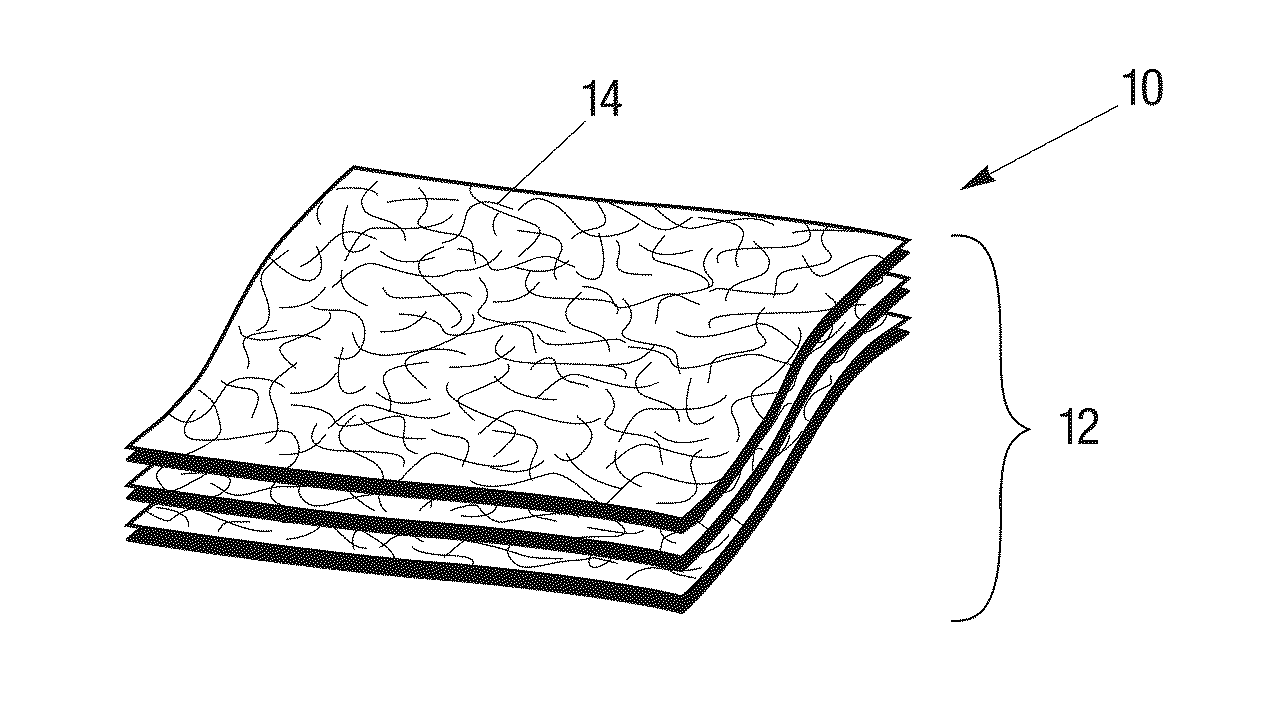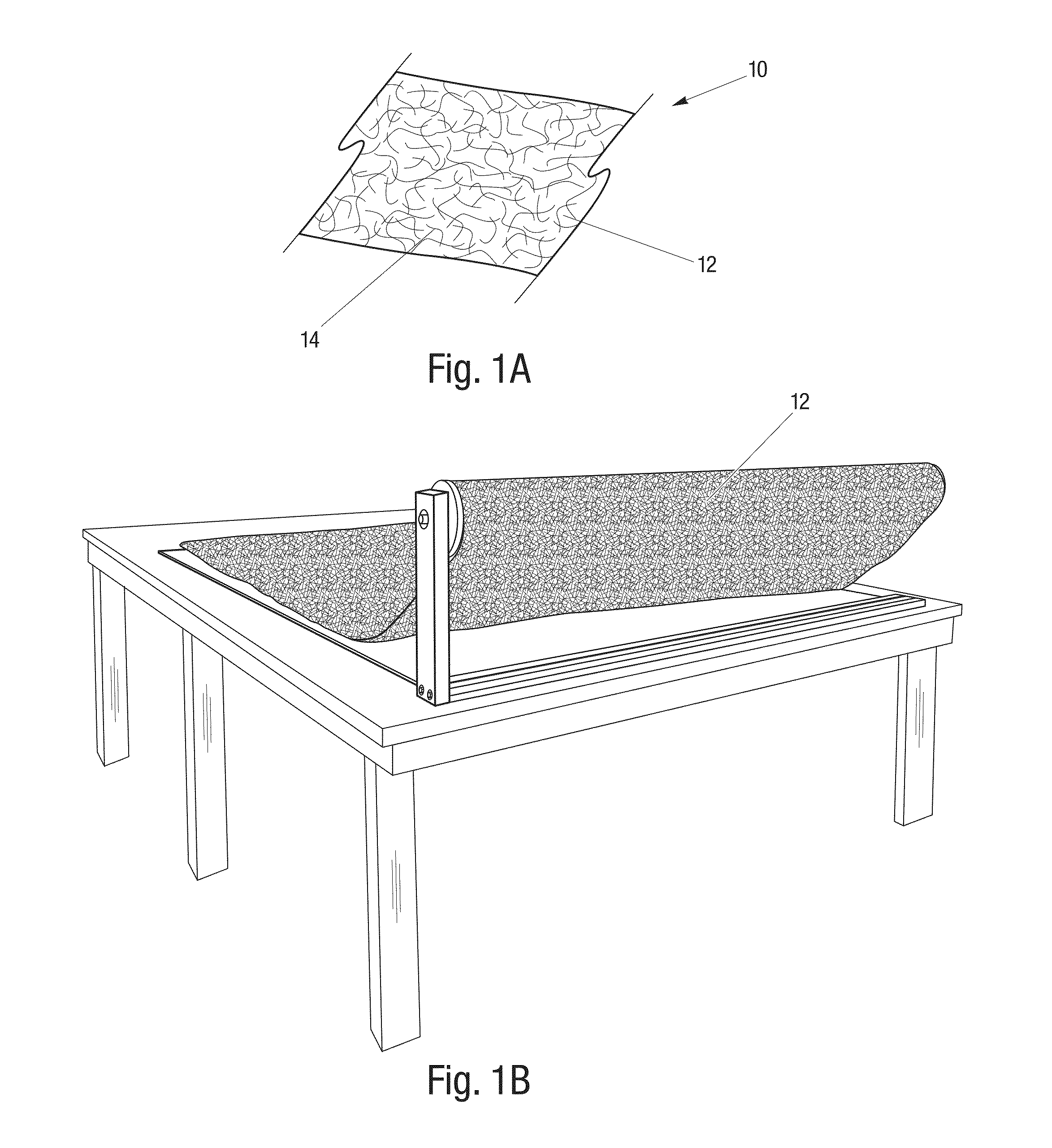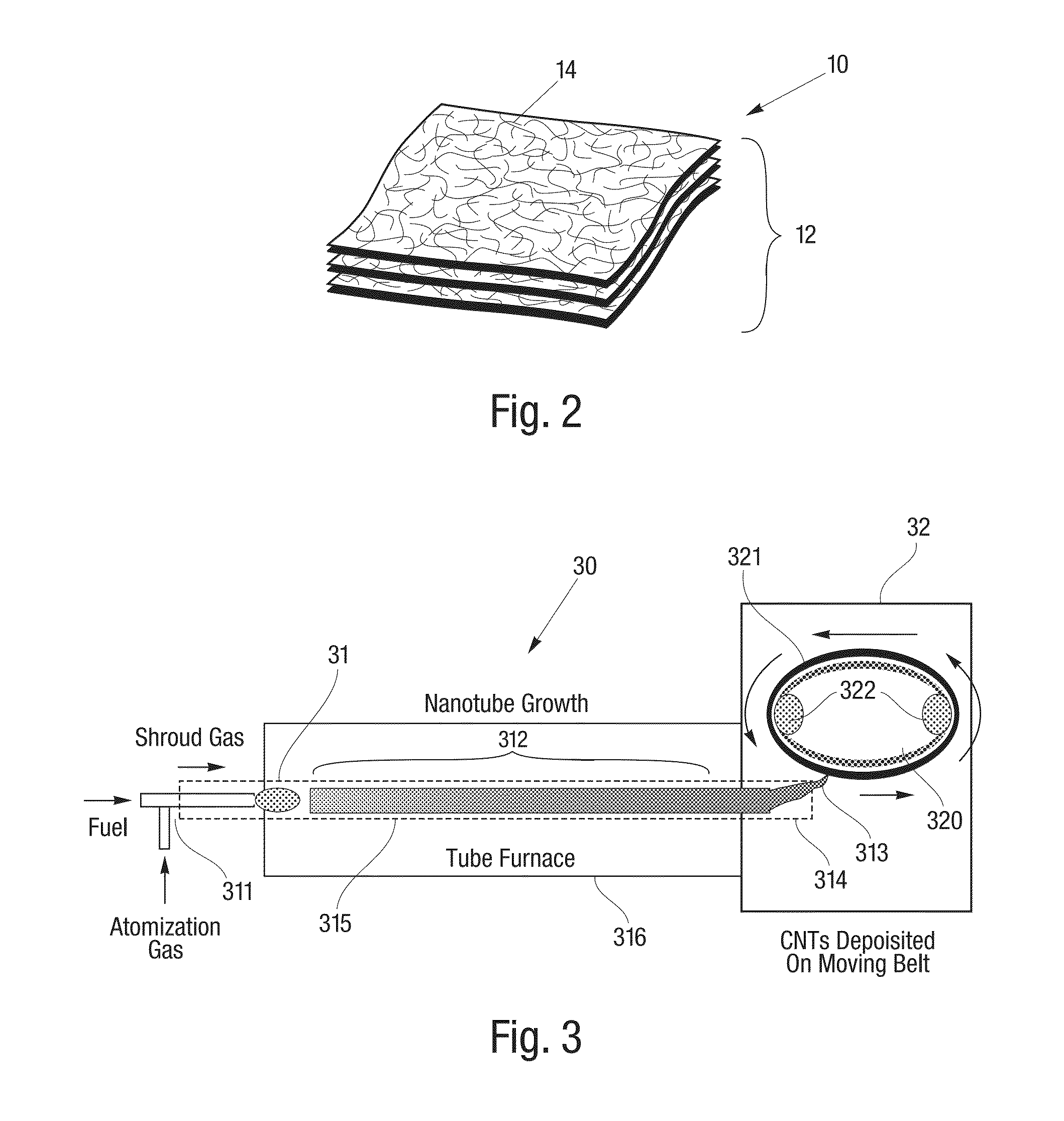Nanotube-Based Insulators
a technology of nanotubes and insulators, applied in the field of insulators, can solve problems such as drastic reduction, and achieve the effects of minimizing normal-to-plane thermal conductivity, and maintaining in-plane thermal conductivity
- Summary
- Abstract
- Description
- Claims
- Application Information
AI Technical Summary
Benefits of technology
Problems solved by technology
Method used
Image
Examples
Embodiment Construction
[0021]The present invention provides, in one embodiment, an insulator made from nanotubes. In an embodiment, the insulator includes a plurality of carbon nanotube (CNT) sheets stacked or layered on top of one another. The CNT insulator possesses multifunctional properties that can promote thermal insulation, EMI, EMP, EDS shielding, and optical absorption, among other things. In an embodiment, each CNT sheet is defined by a plurality of carbon nanotubes configured so as to minimize normal-to-plane thermal conductivity through the CNT sheet. In certain embodiments, a spacer can be situated between adjacent CNT sheets to further minimize normal-to-plane thermal conductivity.
[0022]Presently, there exist multiple processes and variations thereof for growing nanotubes, and forming CNT sheets, yarns or cable structures. These include: (1) Chemical Vapor Deposition (CVD), a common process that can occur at near ambient or at high pressures, and at temperatures above about 400° C., (2) Arc ...
PUM
| Property | Measurement | Unit |
|---|---|---|
| dimensions | aaaaa | aaaaa |
| temperatures | aaaaa | aaaaa |
| diameter | aaaaa | aaaaa |
Abstract
Description
Claims
Application Information
 Login to View More
Login to View More - R&D
- Intellectual Property
- Life Sciences
- Materials
- Tech Scout
- Unparalleled Data Quality
- Higher Quality Content
- 60% Fewer Hallucinations
Browse by: Latest US Patents, China's latest patents, Technical Efficacy Thesaurus, Application Domain, Technology Topic, Popular Technical Reports.
© 2025 PatSnap. All rights reserved.Legal|Privacy policy|Modern Slavery Act Transparency Statement|Sitemap|About US| Contact US: help@patsnap.com



